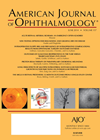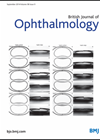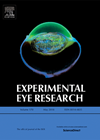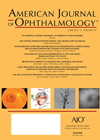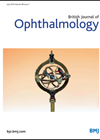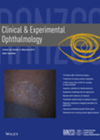
Journal Reviews archive for 2014
Comparison of two interferon gamma release assays (IGRA) for tuberculous uveitis
In this prospective cohort study the authors compared QuantiFERON-TB Gold In-Tube and T-SPOT.TB to evaluate their diagnostic accuracy. They enrolled 120 consecutive new uveitis presentations over a two year period in a tertiary centre. The majority were Chinese (61.3%), followed...
Injection frequency and anatomic outcomes following conversion to Aflibercept in neovascular AMD patients
This is a retrospective study of patients with neovascular age-related macular degeneration (AMD) treated with intravitreal Lucentis and / or Avastin who were switched to aflibercept (Eylea). This study was carried out by the Casey Eye Institute retinal clinics, between...
RPE use similar pathway to regulatory T cells to inhibit immune response
Retinal pigment epithelial (RPE) cells form an important part of the blood-retinal barrier that protects the neuronal cells responsible for sight. RPE cells are involved in innate and adaptive immune responses via expression of surface molecules and release of cytokines....
Polymerase chain reaction evaluation of infectious multifocal serpiginoid choroiditis
This paper presents a retrospective review of infectious agents associated with multifocal serpiginous choroiditis (MSC) based on polymerase chain reaction (PCR) evaluation and specific antimicrobial therapy. The study included 13 patients with MSC who were evaluated with PCR for the...
Role of fundus autofluorescence patterns and baseline atrophy area on geographic atrophy progression
Central geographic atrophy (GA) is one of the morphological sub types of late-stage macular degeneration. The natural course of the disease is characterised by expanding areas of macular atrophy, which cause absolute scotoma. Fundus autofluorescence (FAF) is derived from lipofuscin...
Intravitreal functional plasminogen in branch retinal vein occlusion
Branch retinal vein occlusion (BRVO) is the second most common vascular disorder of the eye. Intravitreal injections of anti-VEGF agents and corticosteroids have proven efficacy. Posterior vitreous cortex (PVC) adhesion has been shown to support the development of retinal vein...
Efficacy of intravitreal dexamethasone implant in patients with persistent macular oedema
Chronic cystoid macular oedema (CME) can develop secondary to various pathologies such as diabetic maculopathy, retinal vein occlusion and uveitis. It can cause significant visual impairment and macular damage. The therapeutic effect of corticosteroids in CME is through one or...
Effect of voriconazole of vision of healthy volunteers
Voriconazole is a broad spectrum, triazole antifungal agent used for systemic fungal infections. It has a favourable safety profile and is available in both intravenous and oral forms. The commonest adverse drug reactions with voriconazole are changes in visual perception,...
Visual acuity after cataract surgery in AMD patients
The data from this study are obtained from the Age-Related Eye Disease Study (AREDS) 2 and analysed to evaluate if cataract surgery benefits patients with concurrent age-related macular degeneration (AMD). The AREDS 2 was a five year, prospective, multi-centre randomised...
Intraoperative floppy iris syndrome and prevalence of intraoperative complications
Alpha-blockers (particularly of the selective type) are known to be associated with intraoperative floppy iris (IFIS) and poor dilation, which can present in various severities during cataract surgery and need to be recognised in order to avoid intraoperative complications. Methods...
Anterior and posterior capsular opacification with the Tecnis ZCBOO and AcrySof SA60AT IOL
This a randomised, controlled, prospective and double-blind study comparing the anterior capsular opacification (ACO) and posterior capsular opacification (PCO) outcomes with two types of single-piece hydrophobic acrylic intraocular lenses (IOL), and AcrySof SA60AT – Group A, and Tecnis ZCBOO –...
LASEK vs. epi-LASIK for myopia: meta-analysis
Previous studies have produced inconsistent conclusions on the relative benefits between LASEK vs. Epi-LASIK. LASEK uses 20% alcohol to separate an epithelial flap from the Bowman membrane. After ablation, the epithelial flap is repositioned onto the cornea. Epi-LASIK creates the...

